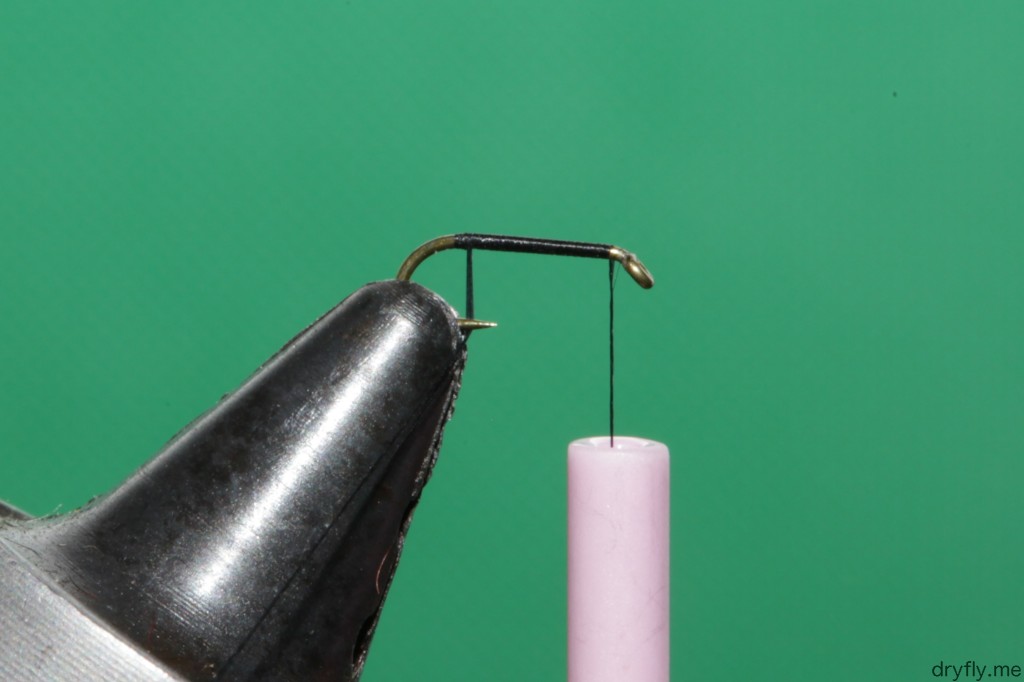Hook: TMC 518 #32
Body: TMC 16/0 for attaching the CDC, Sheer 14/0 for the body
Wing: White CDC
This pattern comes from the “Tying small flies” book by Ed Engle, a very good book about just that: tiny small flies in all its variants.
Hook: TMC 518 #32
Body: TMC 16/0
Hackle: Smallest hackle from a Whiting Bronze dyed brow
I really enjoy the challenge of tying on a #32, here I practice on tying in the smallest hackle feathers I can get of my Whiting cape. To take a idea and bring it down from #12 to #32 challenges both your imagination, your stock of material and your eyesight!
This pattern is one of the simpler to tackle in this size, as long as you can get the hackle small enough.
Hook: Knapek Midge Pupae #16
Thread: Sheer 14/0 White
Body: Hare’s Ear Plus Dubbin Dark Olive with UNI Mylar #16 Peacock wrapping
Tail: Taimen Krystal Flash
Wing: Single white CDC
Thorax: Hare’s Ear Plus Dubbing Dark Olive
A Emerger with a little bit of bling, and the Hare’s Ear dubbing makes a nice body. Using a single CDC feather this should sit low in the surface.
Tying very small flies (down to #32) one of the first thing to consider is what kind of thread to use to avoid building up too much. So far I have tested out 3 different threads that I use for sub #20 hooks:
Here I have wound up the different threads on a TMC 100 #24 hook to give you an idea on how it looks like.
I normally don’t take this out until I hit #30 or #32, but for these very small flies this thread is the absolute best: the build-up is hard to notice! But, this of course comes at a cost, it can be a most frustrating thread to work with compared to anything else: it feels like thin silk between your fingers and it will break as easy!

This thread is pre-waxed and is easier to work with than the UNI 17/0 thread. Since the UNI only comes in white this is the other #30/#32 thread that I use. The TMC is stronger than the UNI thread so it is “easier” to work with on the small hooks.

The Sheer 14/0 is my default thread for anything sub #18 – this thread is strong compared to its minimal buildup and is very easy to work with. It also comes in a wide variety of colors that makes it ideal to build bodies for small emergers/nymphs. This is also one of the threads I can use for large atlantic salmon flies when building up lots of material to avoid buildup of thread.
Recent Comments